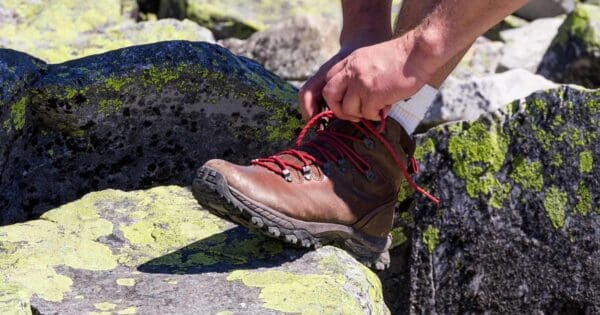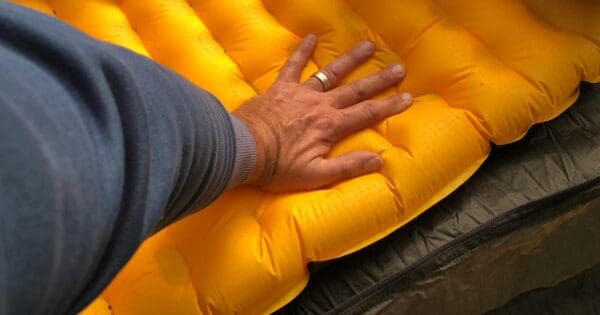Most of the clothing we wear day to day is made from cotton. According to Cotton Inc up to 85% of our clothing is made from our favourite fibre. But, why is it then when you walk into a hiking or camping store, our favourite fibre is nowhere to be seen?
Well, it’s not the best material for ‘active wear’. And, by active wear I mean clothes that we’re active in. Go into any sports shop and it’s the same story. People go to sports shops to buy clothes to workout or play sports in, and there isn’t a lot of cotton to be found. If you’re going to sweat, don’t wear cotton. That’s generally the rule of thumb. It doesn’t dry quickly and becomes uncomfortable and smelly.

What About Synthetics?
Most active wear is synthetic. It’s made from technical synthetic fibres that are designed to wick moisture and not chafe.
Most hiking and camping stores stock a lot of synthetic clothes and the technological advances that have been made over the past few years are astonishing. Go to a specialty sports store too and you’re going to see a lot of synthetics.
However, over the years merino wool has become the preferred choice for many types of active wear. Look at most gym goers and runners and they’re probably wearing something synthetic with one of the famous sportswear logos on it. But, chat with hikers (and climbers and skiers) and very often they’re going to sing the praises of 100% merino wool, or a merino wool blend. Merino wool is the fabric of choice for the serious hiker.

Why is Merino Wool So Popular With Hikers?
Well, hikers are a bit different than cyclists and runners and gym goers. Participants of these other activities do their thing, go home, and throw their clothes in the wash. Hikers on the other hand, well we could be out on the track for several days. We want to keep weight down so we don’t want to have to pack a clean t-shirt, undies, or socks for each day and this is where merino wool is great.
Merino wool is insanely odour resistant. You can wear the same merino wool t-shirt day in, day out for up to a week and you’re not going to stink. This is what makes it perfect for not only hiking, where you want to keep pack weight down, but also travel where you might not have access to a washing machine very often.
The author of this article took two merino wool t-shirts with him for three weeks in Europe. He alternated between them each day and only washed them once. These tops were fresh enough to wear walking around cities during the day, and for tapas and cerveza in the evening. On a 4-5 day hike you can easily get away with just wearing the one top during the day. Same goes with merino socks and merino underwear—you don’t need to carry a pack full of them.
What are the other benefits of merino wool?
There are many benefits of merino wool. It’s not just an odour resistant, one trick pony.
Merino wool wicks moisture. This is nifty from a comfort point of view—it’s not nice to be weighed down by your sweat all day—but this feature can actually be really important too. Hiking exposes us to all sorts of conditions. If your clothing doesn’t dry quickly and the temperatures plummet you could find yourself very cold and at risk of hypothermia.
Plus, there is nothing worse than putting on wet socks in the morning—your merino socks are likely to be nice and dry if you aired them out overnight.
Additionally, merino wool has a knack for keeping you warm, when you need to be warm, and cool, when you want to be cool. It’s highly breathable. And, it’s soft and comfortable to boot. What’s more, it’s a natural fibre that’s biodegradable.
Could merino wool tick any more boxes?
Paul is the Founder and Chief Merino Fanatic at Ottie Merino an Australian made merino wool t-shirt brand, and runs the popular hiking group Hiking in Australia & New Zealand and hiking blog, Hike Australia & NZ.





